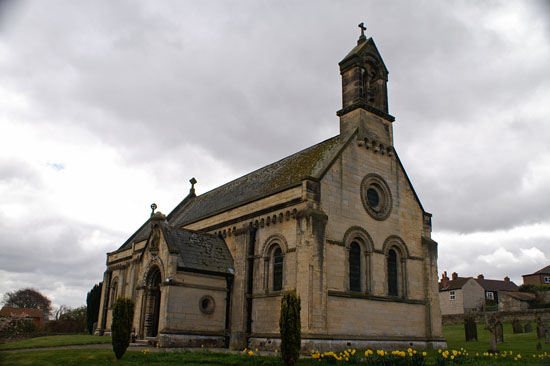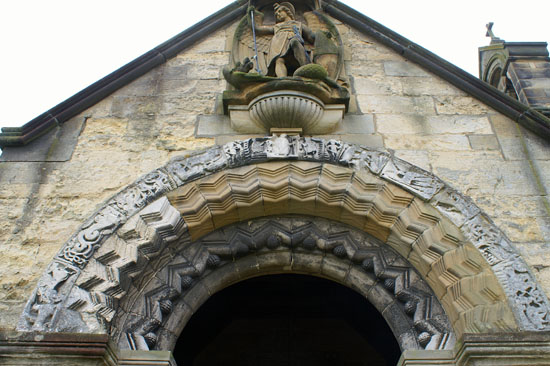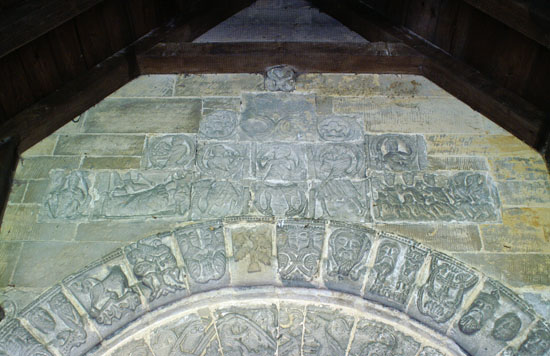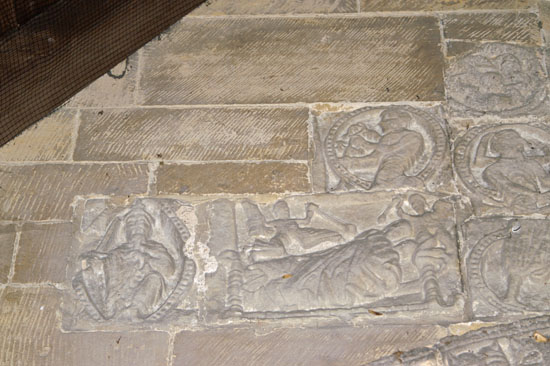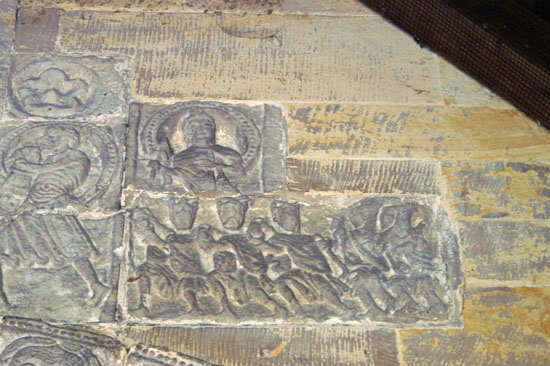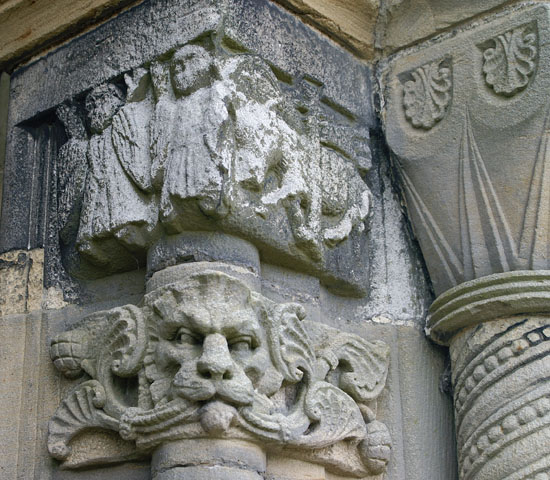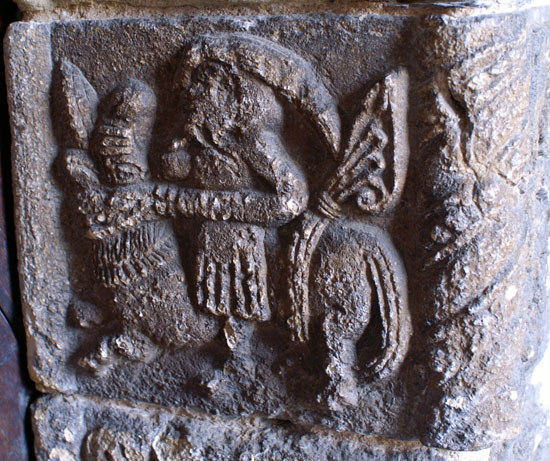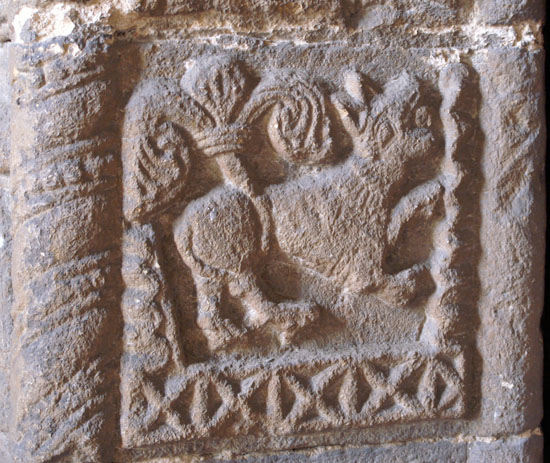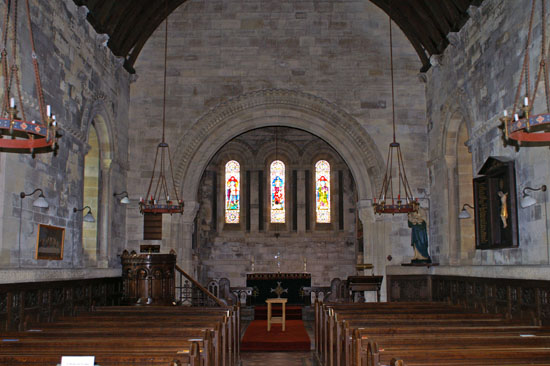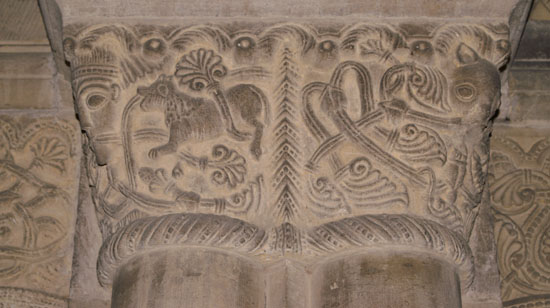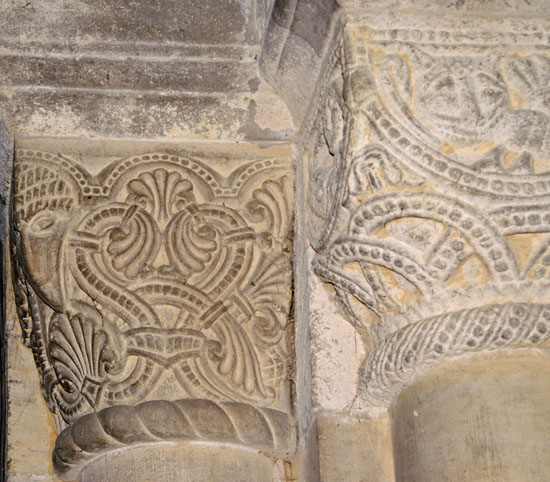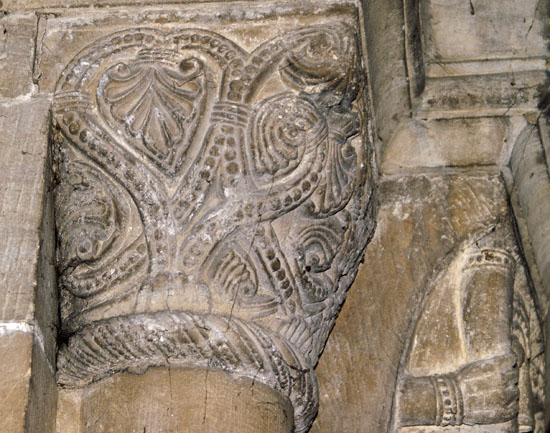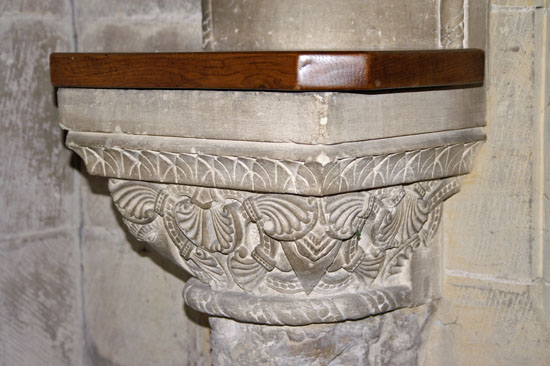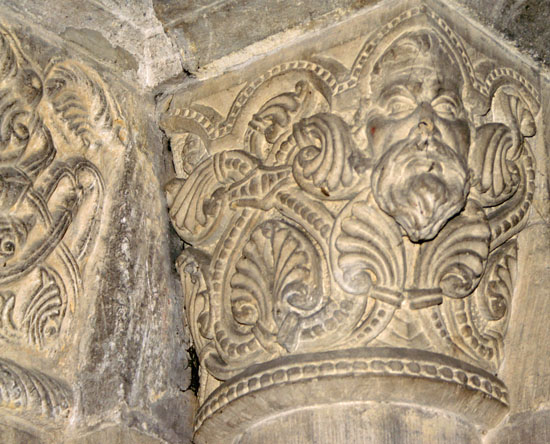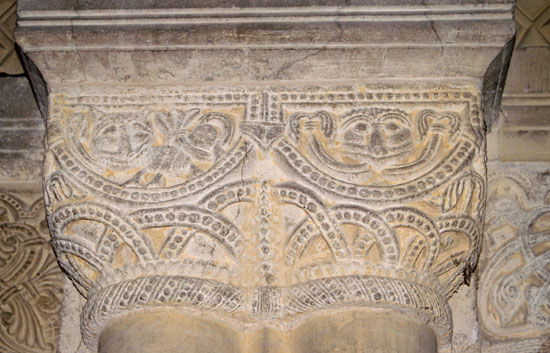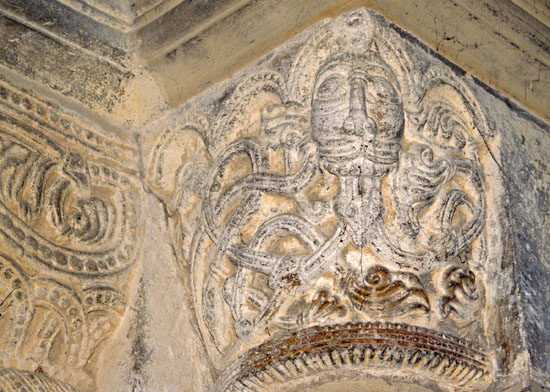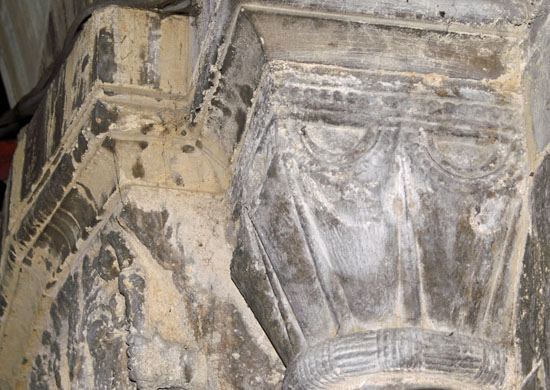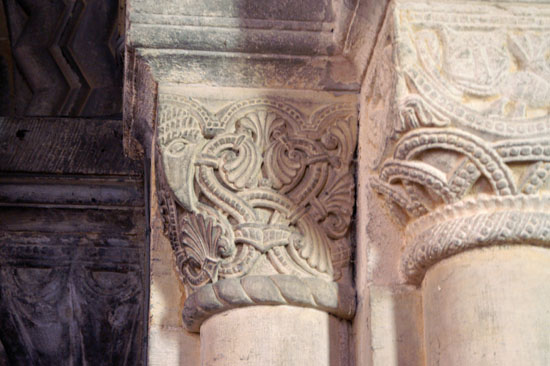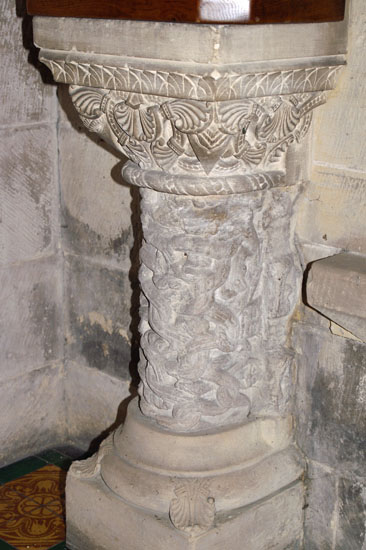|
|
||||||||||||||||||||||||||||||||||||||||||||||||||||||||||
|
Please sign my Guestbook and leave feedback |
||||||||||||||||||||||||||||||||||||||||||||||||||||||||||
|
Recent Additions |
||||||||||||||||||||||||||||||||||||||||||||||||||||||||||
|
|
||||||||||||||||||||||||||||
|
Similarly, within the church are corbels, almost all original, that were originally on the outside of the church. Remarkably, much of it has a double row of carvings, the top one set beneath a series of small arches. Whether the row set below it was originally contiguous with the top row, I don’t know. Just to confuse things further, the restorers have laid some of the top row in a horizontal plane that obviously was not their original aspect! Confusing, yes, but most of it clearly original and of the most interesting design. The arched corbels are more reminiscent of France than of England, which is a timely reminder that our Norman churches were generally founded by Normans! There are even original corbels mounted along the side walls of the porch. Inside the church we also see Norman friezes - some but not all original - adorning the walls. The Norman pillar piscina is one of the finest you will see anywhere. Above the north door, within the porch, are finely decorated Norman panels. There are three complete figures as well as fragments of “Labours of the Months” carvings such as those which adorn the font at Brooklands Church in Kent. We can also see The Virgin Mary in bed and the Three Wise Men paying homage. Two of these eleven panels are known to have been either side of the original chancel arch but the others, remarkably, were found face inwards on the north and south walls of the original nave walls. Why? There is too much to explain here, and there seems to be a considerable element of speculation even amongst the more authoritative sources. If you can divorce your appreciation of the Norman sculpture here from your frustration at its re-location then a visit to Barton-le-Street will be a rewarding one. The carving itself may not be of the first rank, but the richness of the imagery is. Let us also pay tribute to the restorer. A Victorian “reproduction” of a Norman church it might be, but it’s not at all bad and is a decent setting for its Norman treasures. And how easy it would have been to discard them all.... |
|
|
||||||||||||||||||||||||
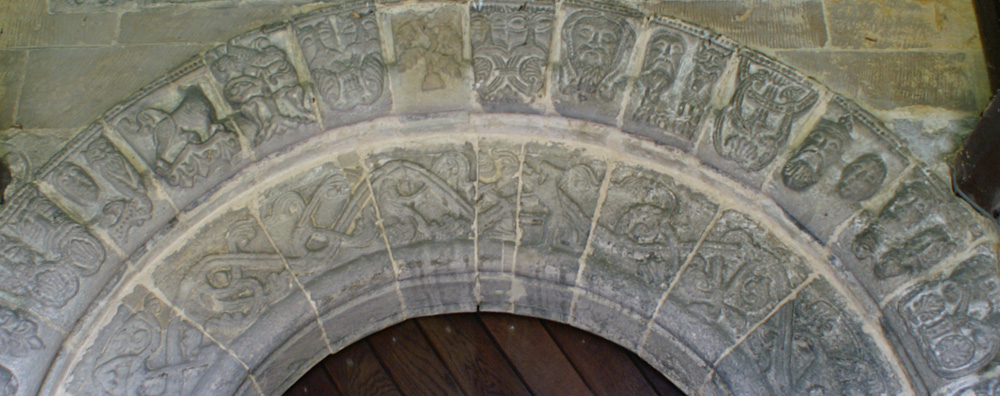 |
|
Close up of the voussoirs (stones forming arches) of the north doorway. |
 |
|
And some of the voussoirs of the outer doorway. There is a cornucopia of figures here, many of them quite hard to distinguish. Piecing together even the inner chevron moulding seems to have presented quite a challenge to the restorers. Note the “fruit” that has been inset into the underside of the chevrons. |
|||||
 |
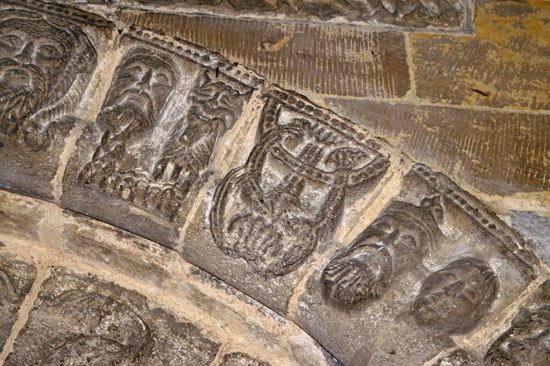 |
||||
|
Detail of some of the voussoirs of the outer order of decoration on the north doorway. There are many paired heads. We can also, however, see a finely-carved bull. To the right of him is a curious scebe that seems to show a crocodile-like head devouring some sort of scaly fish or dragon |
|
|
||||||||||||||||||||||||||||
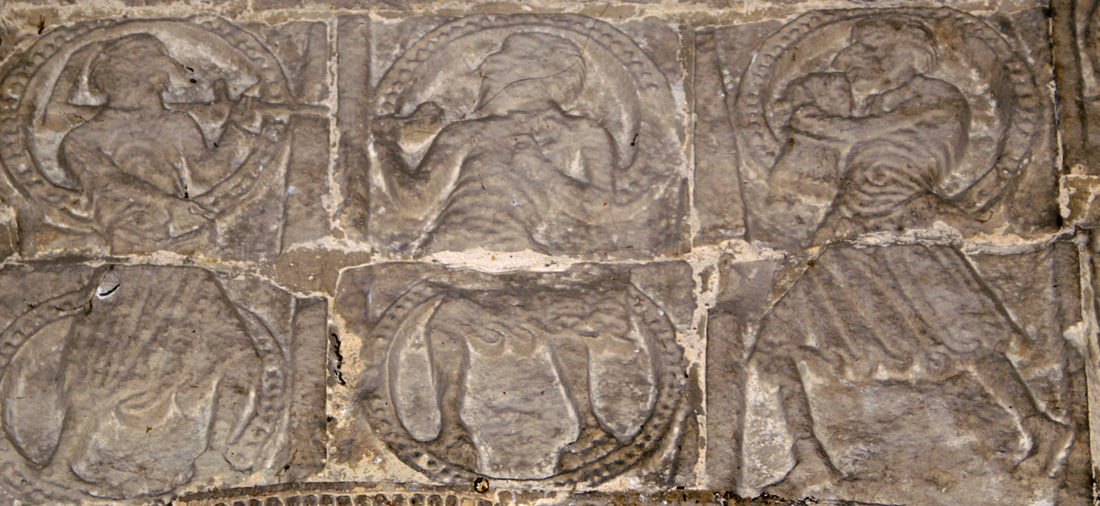 |
|
The surviving complete figures from the Labours of the Months. On the left, I believe, is June - Hay Cutting. The others are difficult to make out. The central figure could be January - Feasting. The right hand figure is clear enough but it is still impossible to make out what it represents; possibly wheat harvesting - August. |
||||||||
 |
 |
 |
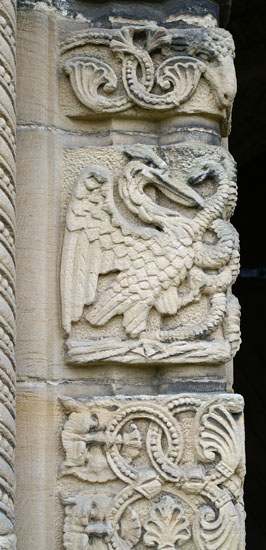 |
|||||
|
The decoration on the outer door is where there is most evidence of recutting or complete re-design. Only the top stone and the lowest three on the east side seem to be indisputably original. To what extent the others have been completely replaced or re-cut is open to conjecture but if they are completely “new” then the sculptor had a fine appreciation of Romanesque art. On the other hand, perhaps some stones were damaged and the restorers simply copied them? We do know that the jamb shafts at the extreme left and right of the doorway are modern. |
|
|
||||||||||||||||||||||||||||||||||||||||||||||||||||||||||||
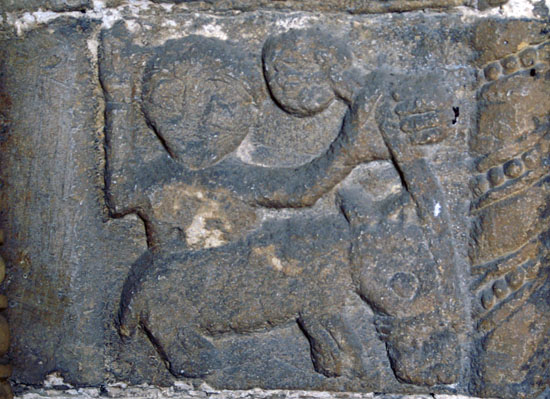 |
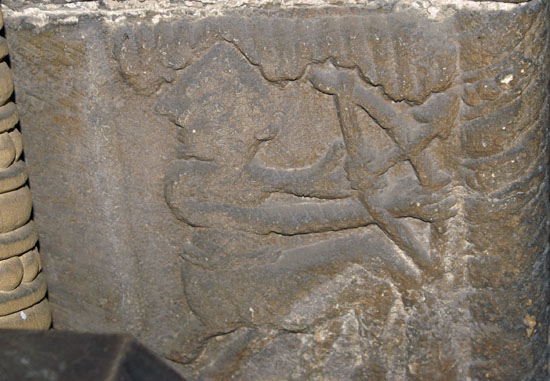 |
||
|
Whereas we know that much of the porch doorway is not original, the north door itself, although it was moved from the south, is another story. Of these voussoirs, perhaps the best example is (top left) of Samson, hair streaming behind him, sitting astride the lion and killing it with with his bare hands. Below left we have a man sitting on a rather under-sized ass who has his nose in a bucket! it is not clear what he holds in his hand, but there is a likelihood that this carving has some connection with Jesus’s entry to Jerusalem on a donkey. Top right is a dog of some sort with a curious “Prince of Wales Feathers” attached to his torso! Bottom right someone - maybe Sagittarius? - is firing off a bow and arrow. I don’t think he would be able to aim for well in that posture! Note to the left of the archer a modern jamb pillar. |
|
|
||||||||||||||||||||||||||||||||||||||||||||||||||||||||||||||||||||||||||||||||||||||||||||||||||||||||||||||||||||||||||||||||||||||||||||||||||||||||||||||||||||||||||||||||||||||||||||||||||||||||||||||||||||||||||||||||||||||||||||||||||||
|
Barton-le-Street also boasts a magnificent and unusually complete Norman pillar piscina. There is a distinct difference in texture between the bowl and the pillar which makes me wonder whether the bowl has been re-cut. The base, of course, is modern. The pillar itself seems completely original. The pattern seems to be of intertwined tendrils, or possibly serpents. |
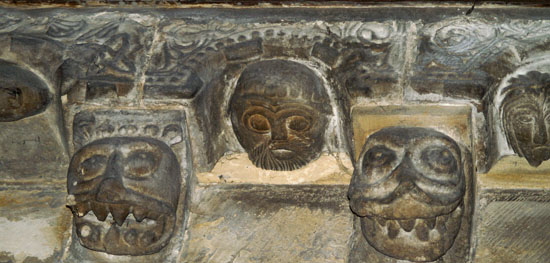 |
|||||
 |
|||||
 |
|||||
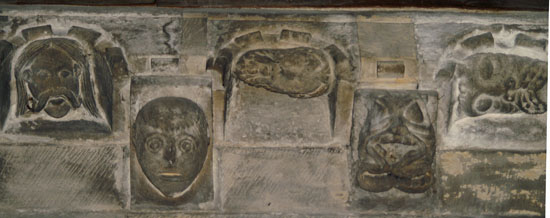 |
|||||
|
The corbel table within the modern church has been moved from the outside of the original church. In the top two pictures the unusual “arched” setting is visible. Below the arched corbels there is another course that I assume were separate before the relocation. The corbels themselves are in fact extremely crude and not very interesting - compare these with those at Kilpeck or Iffley. Note also that the restorers seem to have put some of the corbels into the arches horizontally (see picture lower left). It seems strange that such crudeness co-existed with the superb chancel arch capitals. However, this is one of the fascinations of Barton-le-Street : fine work sits alongside what is gimcrack! I am not the staunchest of defenders of Victorian “improvements” to churches but it is worth comparing the originals with the elaborate and finely-carved modern corbels on the outside of the church (lower right) which also have all the whimsy and some of the subject matter of Norman corbels. |
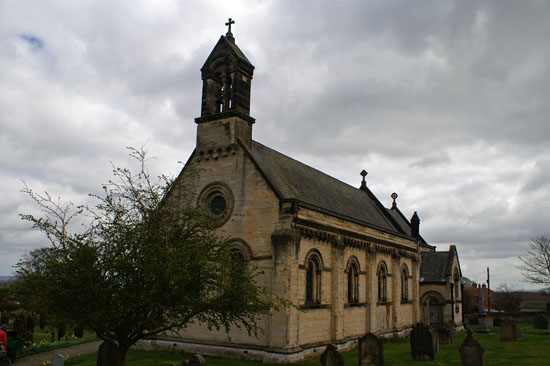 |
|||||
|
The church from the south aspect/ |
|||||
|
Barton-le-Street is a “living church”, serving the needs of the local population as it has done for over 1000 years. To see the activities of this and other churches in the “Street” group please visit their website at : http://www.thestreetparishes.org.uk/. To go straight to the Barton-le-Street section see http://www.thestreetparishes.org.uk/barton-le-street.html. Note that I will be covering Hovingham Church, another fascinating church within the Street group shortly. |
|||||
